A Boy Between Worlds: The Tragic and Miraculous Survival of Narcisse Pelletier
By India Dixon, Queensland Memory | 22 February 2022
The history of early European exploration in Queensland waters is littered with a myriad of adventurous and harrowing survival stories. Shipwrecks were frequent along the relatively unknown coastline, and castaways found themselves stranded with virtually no hope of rediscovery or rescue by other European exploratory groups.
One such story, which has remained relatively unknown until recent decades, is the experience of Narcisse Pelletier.
State Library of Queensland has recently acquired one of the few surviving copies of Narcisse's only publication, "Dix-Sept Ans Chez Les Sauvages" which was written and published on his behalf by Constant Marland.
Published solely in French, the book provides a full account of Narcisse Pelletier's castaway experience.
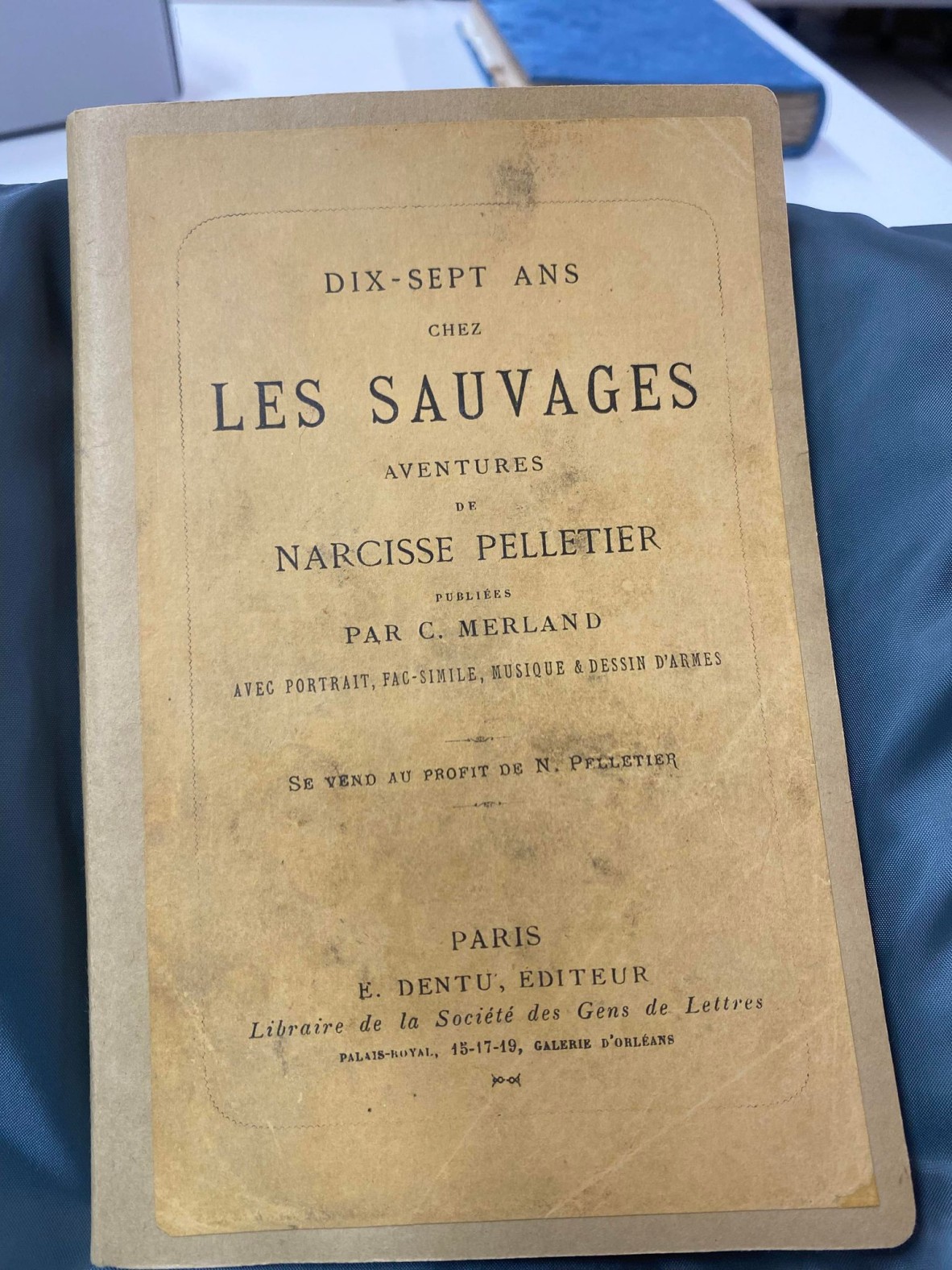
Dix-sept ans chez les sauvages : aventures de Narcisse Pelletier / publiées par C. Merland, Constant Merland 1808-1885, editor. ; Paris, France : E. Dentu ; 1876. John Oxley Library, State Library of Queensland
Narcisse Pelletier (1844-1894) was only 14 years old when he departed from Marseilles aboard the ill-fated vessel, the Saint-Paul, as a cabin boy. This small trading ship, capitalising on the Chinese interest in the Australian gold fields, picked up 327 Chinese passengers in Hong Kong and set sail for the southern settlements of New South Wales and Victoria. The ship would never reach its destination, however; poor weather forced the Saint-Paul to sail through the then-unknown Louisiade archipelago, where it encountered further unfavourable conditions and became shipwrecked on a bank of coral reef near Rossel Island. Forced to abandon ship in the early hours of 1 October, 1858, Narcisse became part of a small surviving crew who would endure the 1,200km journey from the wreck site to Cape Direction in Cape York in a longboat. This small crew left behind over 300 stranded passengers on a coral islet, where they had found shelter as the ship began to break up in the waves.
Upon arrival at Cape Direction at a point known as "First Bed Rock Point", Narcisse disembarked and was left behind alone on the shores. There is some conjecture surrounding the reasons behind Narcisse's abandonment, with some sources suggesting that Captain Pennard may have marooned him as an act of punishment. Articles from the time of his rediscovery in 1875 suggest however that Captain Pennard was unable to find adequate fresh water sources for the entirety of his small crew, and with Narcisse gravely unwell and "half dead" from the journey, the difficult decision was made to leave him behind and continue to seek out assistance.
The crew's longboat was recovered shortly afterwards by the Prince of Denmark, a schooner vessel that conveyed them to New Caledonia despite Captain Pennard's wishes to immediately return and offer rescue to the stranded Chinese passengers.
Unknown to Narcisse at the time, the almost 300 surviving passengers of the Saint-Paul would reportedly face a gruesome death at the hands of local tribal groups. The first of the survivor's accounts, provided by a Chinese man recovered almost four months after the ship's sinking, told of a vicious cannibal practice that claimed the lives of all but four of the Saint-Paul's stranded passengers and crew. The full account, interpreted through Mr. H. Lean Apps, was published in the Freeman's Journal (Sydney, NSW) on Saturday 29 January 1859, and swept through Australian newspapers with great popularity.
However, Narcisse's extraordinary journey was only just beginning.
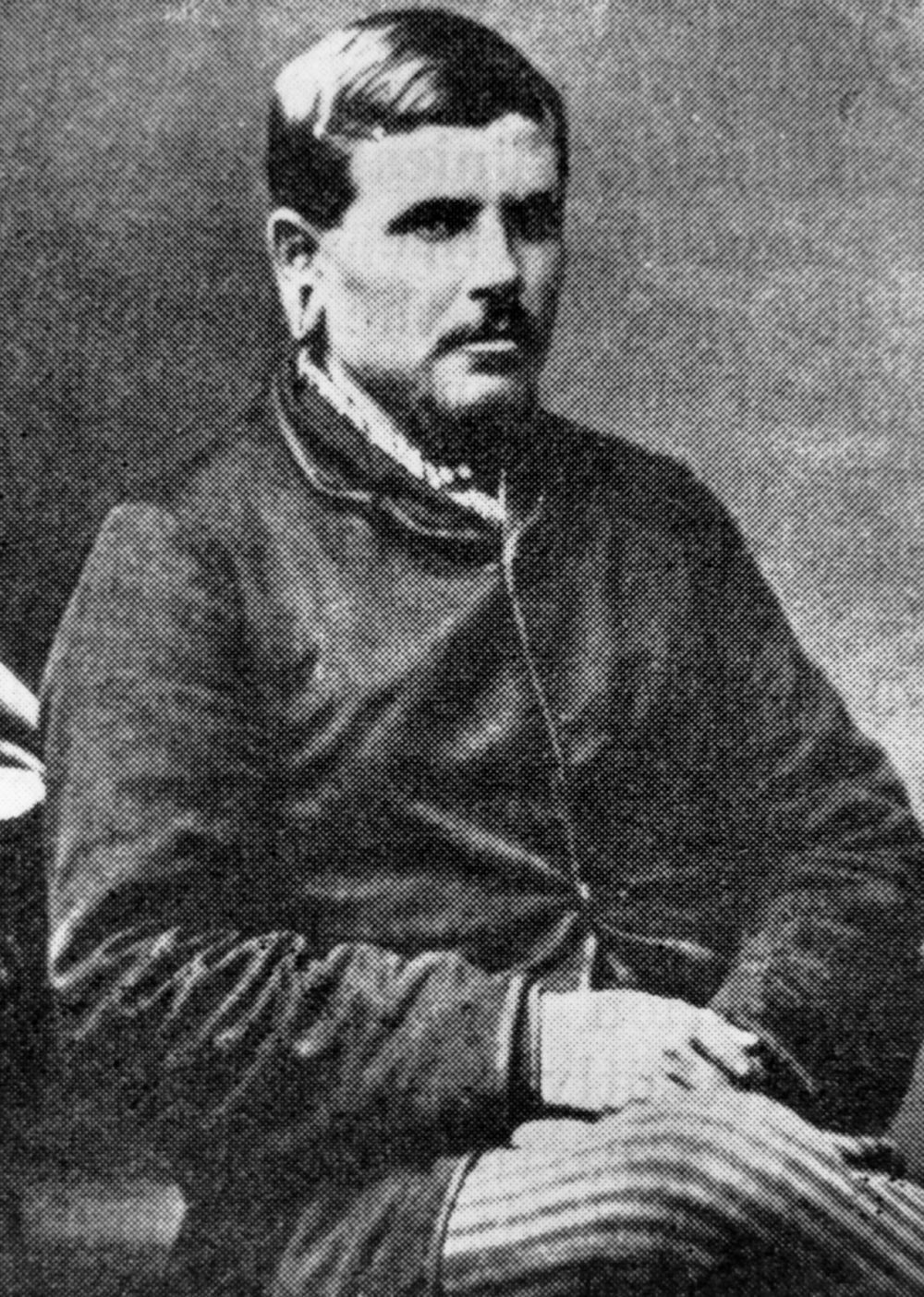
Frenchman Narcisse Pelletier, John Oxley Library, State Library of Queensland
Marooned in Cape York, weak and malnourished from the two week ordeal in the long boat, Pelletier was eventually discovered by three local Aboriginal women. He was ultimately taken in and accepted by their tribe, known at the time as the 'Macadamas' (The Capricornian Newspaper, Rockhampton, 5 June 1875 pg. 363), where he was adopted by a man named Maademan and received a new name; Amglo. He was allowed to assimilate into their social group, undergoing many of the initiation rites that were reserved for adult men within the tribe, and learning both the language and culture. He underwent ceremonial scarring as part of his initiation, and a photograph of Narcisse displaying these markings is printed in the frontispiece of the book.
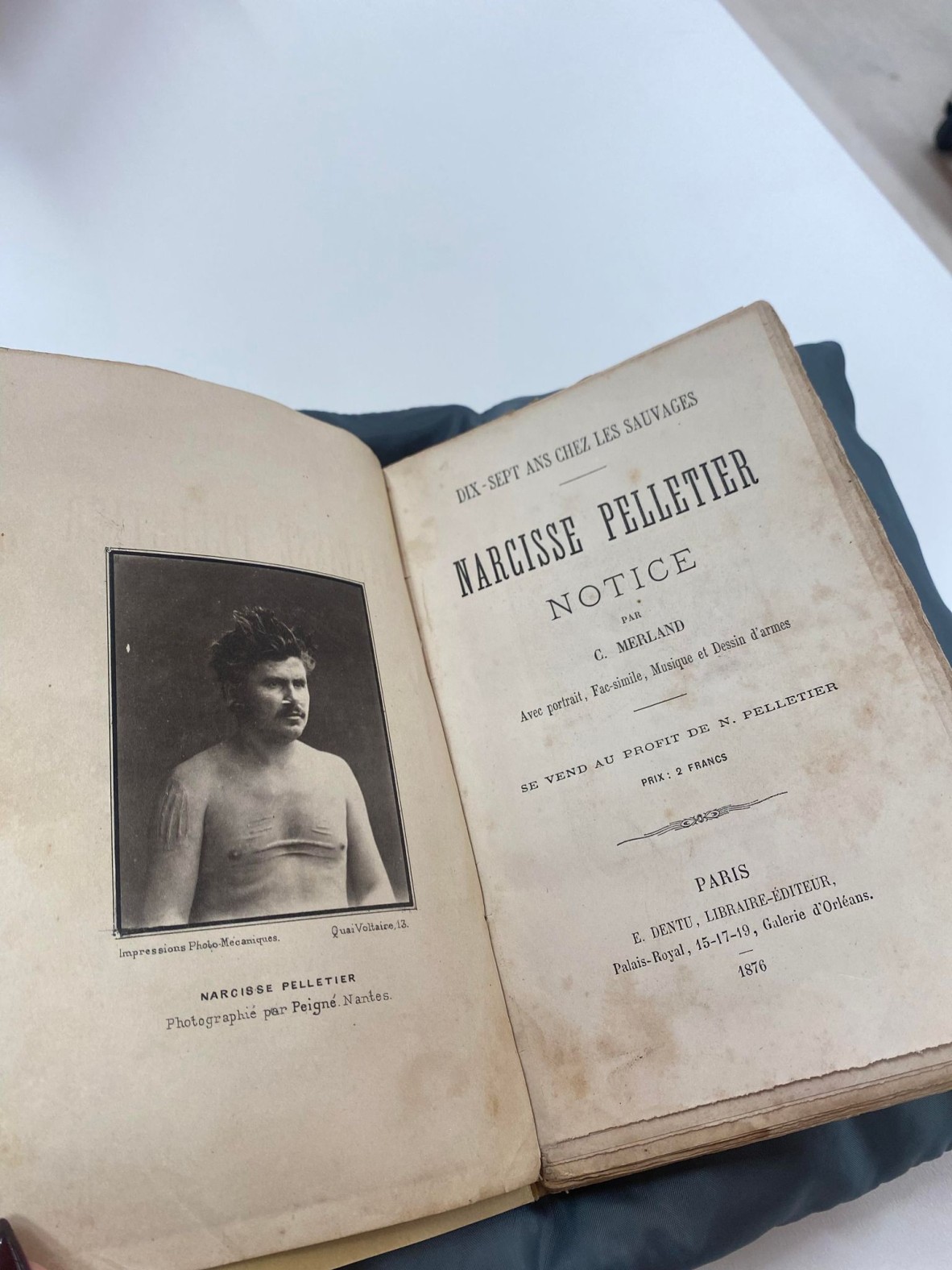
Title page and frontispiece of Dix-sept ans chez les sauvages : aventures de Narcisse Pelletier featuring an image of Pelletier's tribal scarification.
After 17 years with the tribe, Pelletier was rediscovered by the crew of pearling schooner the John Bull. He was brought aboard the ship and the crew claimed later that the tribe were holding him for ransom in exchange for trade. However, Pelletier maintained that this was not the case, and that he had greatly wished to return to his tribe but was afraid of the guns aboard the pearling ship.
After his rescue-turned-kidnapping, Narcisse Pelletier was quickly returned to France. Pelletier eventually married and became a lighthouse keeper, choosing to live in isolation. Dix-sept ans chez les sauvages, the only contemporary book published about his experience, includes some of the earliest sheet music to record Aboriginal songs, with the lyrics written phonetically in-language. The book also includes several copies of the letters he wrote home to his family during the return voyage to France in 1875.
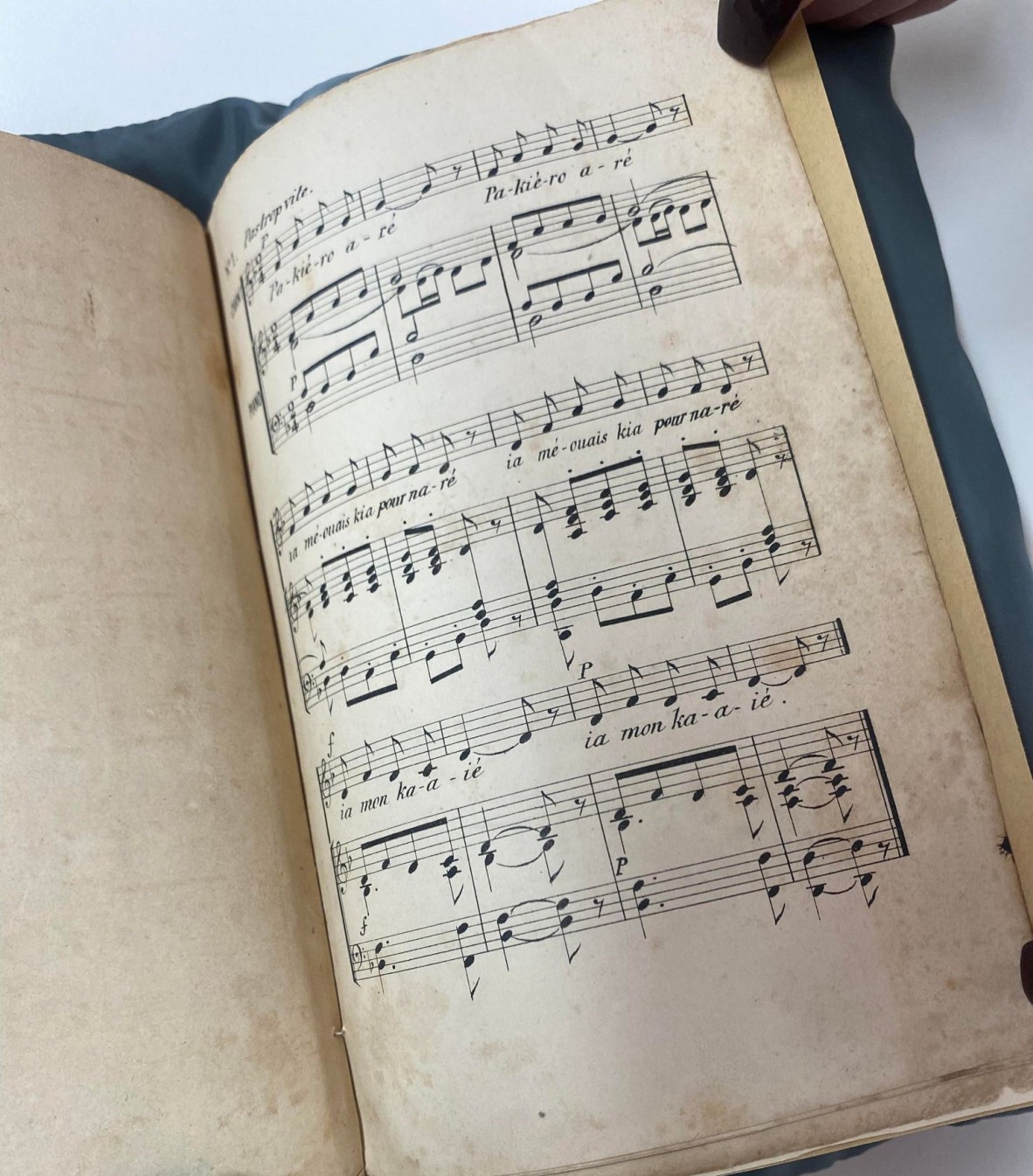
An Aboriginal song recalled by Pelletier and recorded as sheet music, Including lyrics written phonetically in French.
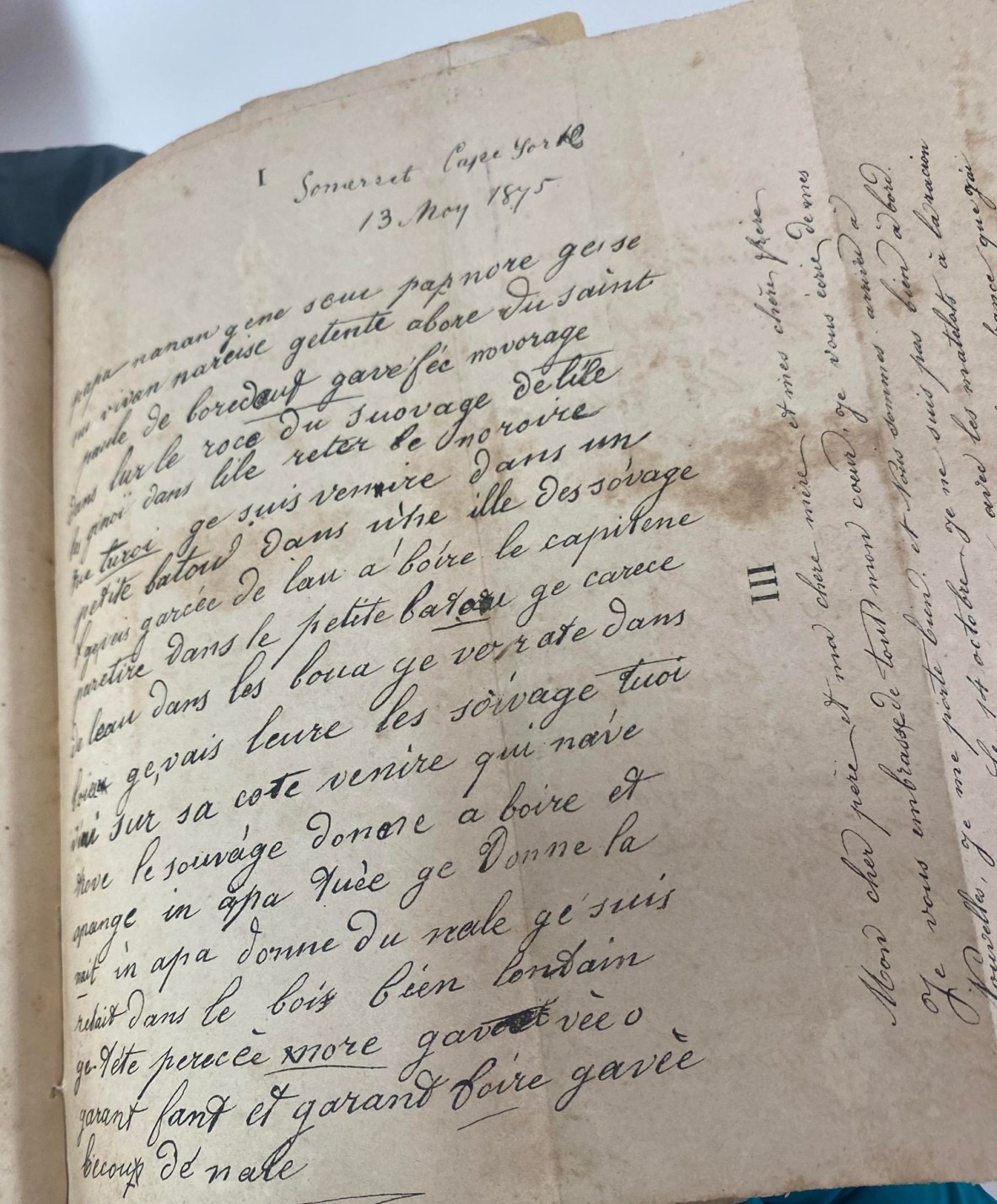
A copy of a letter written by Pelletier addressed to his family in France.
This publication is now available for public access through our catalogue.
Read:
- Original report of Narcisse Pelletier's alleged rescue (Trove)
- Castaway : The extraordinary survival story of Narcisse Pelletier, a young French cabin boy shipwrecked on Cape York in 1858 / Robert Macklin:
- Dix-sept ans chez les sauvages : aventures de Narcisse Pelletier / publiées par C. Merland
- Pelletier : the forgotten castaway of Cape York / introductory essay & translation by Stephanie Anderson ; ethnographic commentary by Athol Chase
- Through the eyes of Thomas Pamphlett : convict and castaway / by Chris Pearce.
Comments
Your email address will not be published.
We welcome relevant, respectful comments.